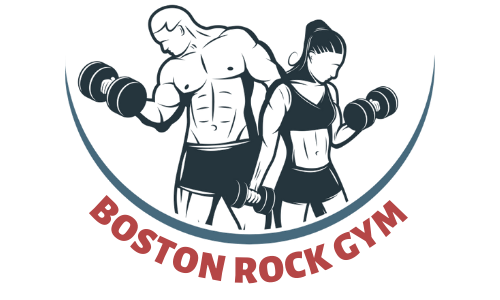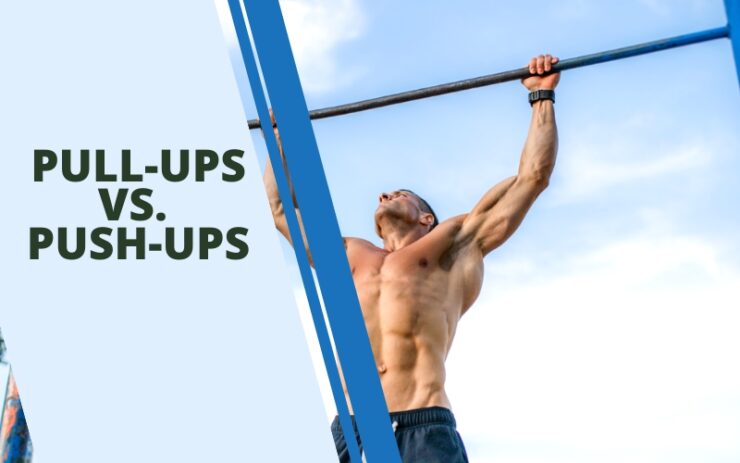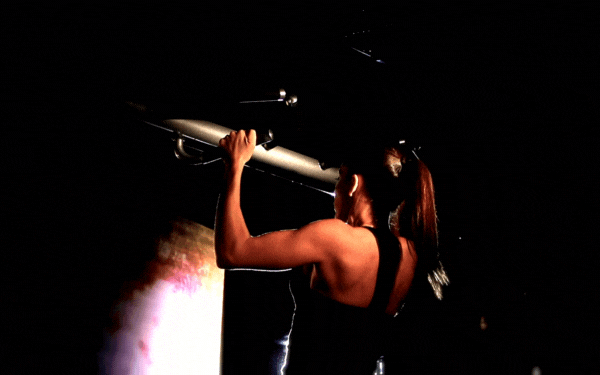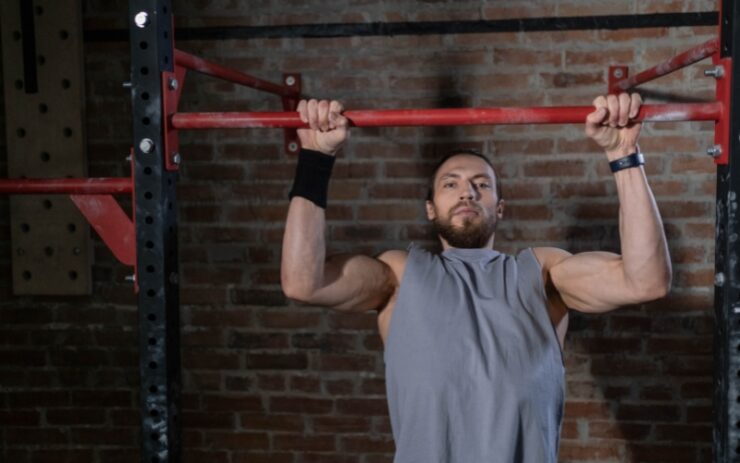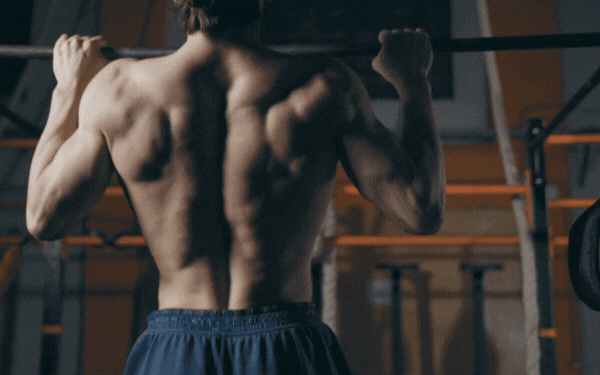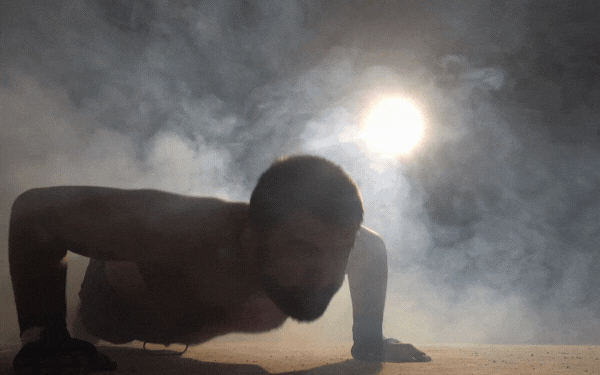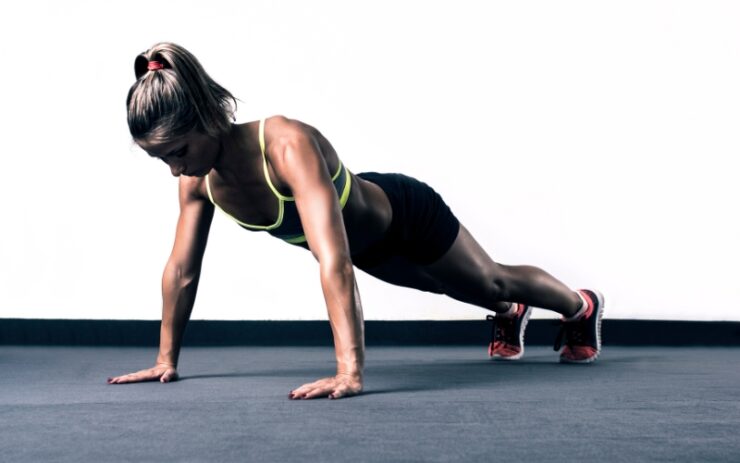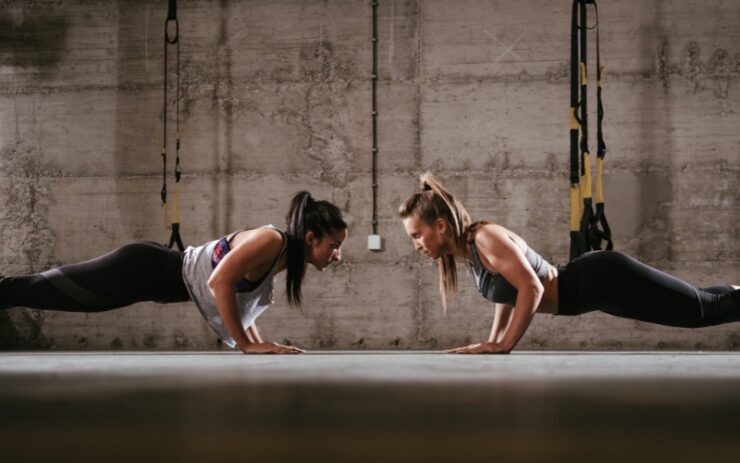One of the first things that come to mind when considering working out, trying to get stronger, and putting on a little muscle is to start doing push-ups and pull-ups. However, before you decide to incorporate these two exercises into your routine, you should learn more about them.
These two exercises are a terrific method to begin resistance training since they can greatly improve your appearance.
But, you should probably decide which of them would benefit you better and fit your needs perfectly. You should choose the workout depending on what your goals are. That is why, in this article, we provide you with all the necessary info about push-ups and pull-ups.
You’ll be able to start working out like a pro once you’re done reading this article, and the best part is it will take less than 10 minutes!
Contents
A Guide to Understanding Pull-Ups
What Are Pull-Ups?
In order to perform a pull-up, a person must suspend themself from an overhead handle and effectively pull their whole body weight in a vertical direction.
It is most typically seen in bodybuilding routines or calisthenic exercises that call for some degree of back muscular activation, particularly in the case of calisthenic training where the pull-up will frequently serve as the primary source of back muscle training stimulus.
Due to the difficulty in completing the exercise correctly, pull-ups are regarded as intermediate-level bodyweight exercises. Higher-level fitness plans will often include certain variants to change various features.
What Are the Benefits of Pull-Ups?
Pull-ups can strengthen your grip strength and endurance in addition to the back and bicep muscles, which are clearly developed throughout the exercise. This is because you are suspended from a bar for the duration of the movement.
Additionally, as a side effect of the workout, the range of motion of a pull-up is highly advantageous for the body’s osseous and connective tissues, lowering vertical spinal column pressure and enhancing shoulder mobility.
What Are the Drawbacks of Pull-Ups?
The biggest drawback of pull-ups is their degree of difficulty, which makes it challenging for even accomplished weightlifters to do successive high-volume sets. This may therefore have an impact on muscle hypertrophy and otherwise restrict how much growth a calisthenics back workout may bring about.
Pull-ups are known to be very incompatible with some sorts of ailments or conditions, particularly those affecting the wrist and shoulder joints as these two areas experience the most strain during a pull-up repetition. This is in addition to the difficulty of the exercise.
How To Do a Pull-Up
If you don’t know how to perform a pull-up, take a look at the steps listed below to find out:
- Take an overhand hold on the bar (aka pronated grip). The most effective grip width for lat activation is medium
- In the dead hang position, expand your chest so that it faces the pull-up bar
- Set up the pull by driving your elbows into your ribs. This will guarantee that you maintain a large chest and improve lat contraction
- If you are powerful enough, your chest should contact the top bar
- Lower yourself to a dead hang posture gradually
- A Guide to Understanding Push-Ups
What Are Push-Ups?
The push-up is a traditional bodyweight complex exercise that requires the user to lie in a plank posture and push themselves upward to engage the chest, shoulders, and triceps.
In calisthenic training regimens, the push-up is most usually viewed as a high-volume upper-body exercise. However, there are several push-up modifications designed to lessen the need for a large volume of repetitions by increasing the stress or resistance applied to the muscles of the upper body.
What Are the Benefits of Push-Ups?
Push-ups’ key advantage is their ability to function as a compound activity while yet allowing for extremely high-volume sets to be completed. This makes them particularly efficient for establishing arm and chest muscle endurance in a brief amount of time.
Push-ups are included in many at-home fat-burning workouts since this high caloric expenditure also results from this high volume capacity.
Push-ups are one of the simplest ways to achieve muscular engagement of the triceps, pectorals, and deltoid muscle groups, and they may be performed with a high number of repetitions. They also require no special equipment or specialized exercise expertise.
Simple adjustments to the form of the exercise can readily provide higher resistance and stress without the need for additional equipment, even in situations when you reach a point where an increasing overload of the push-up is impractical.
What Are the Drawbacks of Push-Ups?
Push-ups have a number of drawbacks, with a general lack of resistance being the principal one. The first is the time that a single set of pushups may take, with more experienced lifters being able to complete repetitions in the triple digits before experiencing any kind of muscular exhaustion. Unless a new exercise is used in place of the push-up, this might result in lengthy and ineffective workout sessions.
The weakest muscle in the upper body, whether it be the triceps or the deltoid muscles, will ultimately restrict the number of repetitions that can be performed during push-ups in addition to overall inefficiency brought on by a lack of resistance.
This links further into the programming challenges of push-ups since the previously-mentioned muscle group restriction conflicts with the fact that, if performed first, the push-up will also negatively impact other exercises in the workout.
How To Do a Push-Up
Take a look at the list below to find out how to successfully do a push-up:
- Create a push-up position with your thumbs slightly outside of shoulder width and your hands on the floor. Your position should be a plank
- Your hands should not be facing directly ahead, so externally rotate them slightly outward. Your shoulders will feel better after this
- Drop yourself gradually till your chest reaches the ground. Your chest should be the only portion of your body that touches the floor if you execute this correctly. You have lost your plank stance if your hips or stomach contact first
- Instead of being flared to the side, your elbows should be 45° from your body. Return to the starting position by pushing
Although the methods for training to increase muscular development and strength may differ significantly, all of them require increasing overload. As long as they are done properly, push-ups and pull-ups are fantastic workouts for beginners, athletes, and the general public trying to enhance their health and quality of life.
Science has demonstrated that between repetitions of 4–20+, the muscular mass may be increased. However, when attempting to increase strength or hypertrophy, you must take into account the reps/sets setup:
- Increase sets each week while keeping repetitions below 6 per set. Concentrate on increasing the weight (weight assistance) by wearing a weight vest or using another means
- Focus on rep ranges 6–20 for hypertrophy, aiming to increase weight or reps each week. The addition of eccentric focus or weight assistance is a fantastic way to introduce a variety
Pull-Ups Vs. Push-Ups – The Main Difference
When it comes to these two exercises, the most important difference between them is the fact that they target different muscle groups. There will be some muscle overlap between push-ups and pull-ups, but there won’t be much. In essence, the two workouts here involve opposing motions in various planes of motion.
While the pectoral muscles in the chest, the front deltoids, and the triceps are used to push the body up during a push-up, the lats (in the back), as well as the abs and core, are also used to maintain torso rigidity. To keep the body upright, even the legs are working hard.
Pull-ups are a great exercise for the lats, biceps, and forearms, but they also work your whole core as you maintain your body position. Although the chest is only minimally engaged at the very peak of the pull-up, there is no lower-body activity during this exercise. The back of the shoulder’s rear deltoids is worked during pull-ups.
Push-ups exercise the front deltoid, which is located on the shoulder blade. Push-ups will expand your shoulders and thicken your arms, chest, and back with regular practice. Pull-ups will help you develop larger arms and a wider back. Therefore, these activities will gradually alter your appearance and provide you with more muscle.
Conclusion
Both push-ups and pull-ups are free exercises that don’t require any special equipment, except for a bar, but you can easily do them at a playground or a park if you don’t have a bar. There are no justifications for skipping these workouts.
You are capable of achieving great results if you stay consistent and on top of your game! But you must take your workouts seriously and make sure you’re giving it your all if you want to see the results sooner rather than later.
